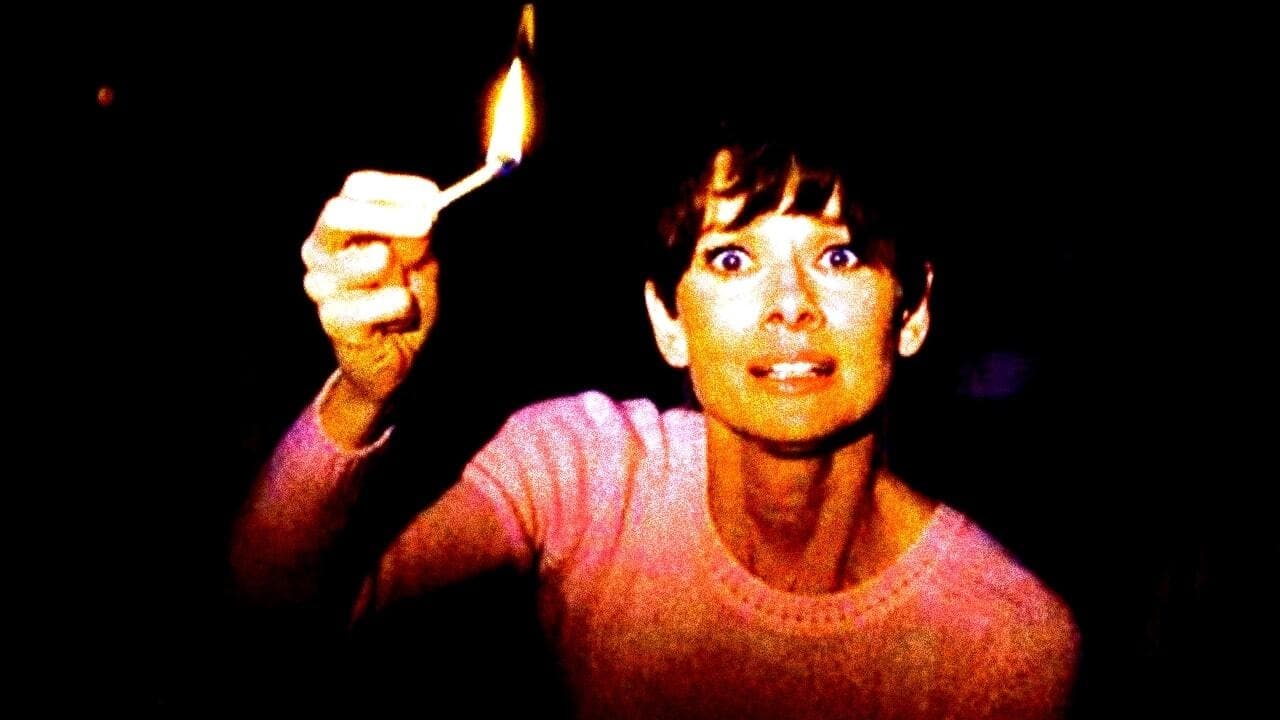
Few films rely as heavily on their cast to elevate material as Wait Until Dark, Terence Young’s taut 1967 thriller. Anchored by Audrey Hepburn’s career-defining performance and Alan Arkin’s chilling villainy, the film transcends its stage origins to become a masterclass in suspense, blending psychological tension with visceral horror. While its pacing stumbles early on, the final act’s harrowing crescendo secures its place among the most gripping thrillers of its era.
Wait Until Dark boasts impeccable genre pedigree, adapted from Frederick Knott’s 1966 Broadway hit—the same playwright behind Dial M for Murder, Alfred Hitchcock’s 1954 classic. Knott’s knack for claustrophobic tension translates effectively to screen, though screenwriters Robert and Jane Howard-Carrington occasionally burden the script with exposition-heavy dialogue. The plot’s central conceit—a blind woman manipulated by criminals in her own home—retains its potency, but the film’s true innovation lies in its audacious climax, which plunged theatres into literal darkness during its original release.
The narrative begins in Montreal, where Lisa (played by Samantha Jones), a drug mule, smuggles heroin to New York via a doll. After sensing surveillance by the sinister Roat (played by Alan Arkin), she offloads the doll to photographer Sam Hendrix (played by Efrem Zimbalist Jr.). When Lisa is murdered, Roat enlists ex-con Mike Talman (played by Richard Crenna) and disgraced cop Carlino (played by Jack Weston) to retrieve the doll from Sam’s blind wife, Susy (played by Audrey Hepburn). The trio manipulates Susy by posing as allies—a ruse initially facilitated by her vulnerability. However, Susy’s heightened senses and the interventions of Gloria (Julie Herrod), a perceptive neighbour, gradually unravel their scheme. The film’s first half leans heavily on contrivances—Sam’s abrupt departure, Roat’s overly elaborate charades—but gains momentum as Susy’s ingenuity shifts the power dynamic.
Terence Young, best known for shaping Dr. No and From Russia With Love, injects the film with a sleek, modernist aesthetic. While constrained by the play’s single-location structure, Young uses shadow and sound design to amplify suspense, particularly in the climactic 20 minutes. The apartment’s cluttered mise-en-scène—cracked walls, dangling lightbulbs—mirrors Susy’s fractured psyche. However, Young’s fidelity to the source material occasionally backfires: early scenes feel stagey, with characters declaiming plot points rather than embodying them. Only when Susy smashes the lights, plunging the screen into noirish darkness, does the film fully embrace its cinematic potential, prefiguring the visceral terror of 1970s slashers and giallo.
Henry Mancini’s score—a discordant blend of quarter-tone pianos and electric harpsichord—eschews his signature whimsy for unnerving minimalism. The recurring “Theme for Three,” with its warped harmonies, mirrors Susy’s disorientation, while the absence of music in key scenes amplifies diegetic sounds (creaking floors, laboured breathing). Though less iconic than Mancini’s Pink Panther or Breakfast at Tiffany’s work, the score’s experimental edge complements the film’s descent into primal fear.
The film’s brilliance hinges on its performers. Hepburn, in her penultimate role before a 12-year hiatus, delivers a physically precise portrayal of blindness—her unfocused gaze and hesitant movements radiating vulnerability. Yet her Susy is no passive victim: the scene where she methodically smashes lightbulbs, declaring “I’m not helpless,” transforms her into a proto-final girl, blending resourcefulness with raw desperation. Nominated for an Oscar, Hepburn outshines even capable turns from Crenna and Weston.
Arkin, however, steals the film as Roat—a giggling sociopath whose charm masks bottomless cruelty. His bifurcated performance (posing as both Roat Sr. and Jr.) showcases unnerving versatility, from avuncular warmth to knife-twisting malice. Ironically, this career-high role typecast Arkin as a villain, alienating audiences accustomed to his comedic talents. Meanwhile, Hepburn’s post-film retirement—a decision reportedly influenced by the shoot’s emotional toll—robbed cinema of an actor poised to shine in New Hollywood era.
Wait Until Dark endures not just for its technical prowess, but for its troubling dual legacy. Hepburn’s departure marked the end of Old Hollywood glamour, while Arkin’s post-film struggles underscored the perils of too-vivid villainy. Yet the film itself remains a blueprint for suspense, its final act—a tactile duel in total darkness—still unmatched in its ability to weaponise audience vulnerability. Young’s direction may lack Hitchcock’s finesse, but in Susy’s groping terror and Roat’s animalistic rage, the film uncovers a truth Knott’s play only hinted at: true horror lies not in the dark, but in what we imagine it hides.
RATING: 7/10 (+++)
Blog in Croatian https://draxblog.com
Blog in English https://draxreview.wordpress.com/
InLeo blog https://inleo.io/@drax.leo
Hiveonboard: https://hiveonboard.com?ref=drax
InLeo: https://inleo.io/signup?referral=drax.leo
Rising Star game: https://www.risingstargame.com?referrer=drax
1Inch: https://1inch.exchange/#/r/0x83823d8CCB74F828148258BB4457642124b1328e
BTC donations: 1EWxiMiP6iiG9rger3NuUSd6HByaxQWafG
ETH donations: 0xB305F144323b99e6f8b1d66f5D7DE78B498C32A7
BCH donations: qpvxw0jax79lhmvlgcldkzpqanf03r9cjv8y6gtmk9